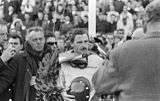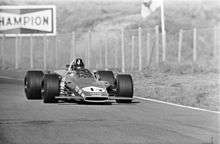Graham Hill
|
Hill in 1975 | |||||||||||
| Born |
Norman Graham Hill 15 February 1929 Hampstead, London, England | ||||||||||
|---|---|---|---|---|---|---|---|---|---|---|---|
| Died |
29 November 1975 (aged 46) Arkley, Greater London, England | ||||||||||
| Formula One World Championship career | |||||||||||
| Nationality |
| ||||||||||
| Active years | 1958–1975 | ||||||||||
| Teams | Lotus, BRM, Brabham, Hill | ||||||||||
| Entries | 179 (176 starts) | ||||||||||
| Championships | 2 (1962, 1968) | ||||||||||
| Wins | 14 | ||||||||||
| Podiums | 36 | ||||||||||
| Career points | 270 (289)[1] | ||||||||||
| Pole positions | 13 | ||||||||||
| Fastest laps | 10 | ||||||||||
| First entry | 1958 Monaco Grand Prix | ||||||||||
| First win | 1962 Dutch Grand Prix | ||||||||||
| Last win | 1969 Monaco Grand Prix | ||||||||||
| Last entry | 1975 Monaco Grand Prix | ||||||||||
| |||||||||||
Norman Graham Hill OBE[2] (15 February 1929 – 29 November 1975) was a British racing driver and team owner from England, who was twice Formula One World Champion. He is the only driver ever to win the Triple Crown of Motorsport—the 24 Hours of Le Mans, Indianapolis 500 and either the Monaco Grand Prix or the Formula One World Drivers' Championship.[3][4] He also appeared on TV in the 1970s on a variety of non sporting programmes including panel games. He liked painting in his spare time.
Hill and his son Damon were the first father and son pair to have both won the Formula One World Championship. Hill's grandson Josh, Damon's son, also raced his way through the ranks until he retired from Formula Three in 2013 at the age of 22.
Hill died at age 46 when the twin-engine six-seat Piper Aztec aeroplane he was piloting crashed and burned in foggy conditions at night near Arkley golf course in North London. Hill, Tony Brise, and four other members of Hill's racing team were returning from car testing at Circuit Paul Ricard in France and were due to land at Elstree Airfield; all six were killed.[5][6][7]
Early life
Born in Hampstead, London, Hill attended Hendon Technical College and joined Smiths Instruments as an apprentice engineer before being conscripted into the Royal Navy, in which he served as an Engine Room Artificer (ERA) on the light cruiser HMS Swiftsure, rising to the rank of petty officer. After leaving the Navy, he rejoined Smiths Instruments.[8]
Racing career
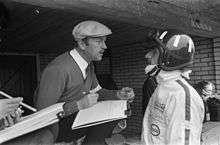
Hill did not pass his driving test until he was 24 years old, and he himself described his first car as "A wreck. A budding racing driver should own such a car, as it teaches delicacy, poise and anticipation, mostly the latter I think!" He had been interested in motorcycles but in 1954 he saw an advertisement for the Universal Motor Racing Club at Brands Hatch offering laps for 5 shillings. He made his debut in a Cooper 500 Formula 3 car and was committed to racing thereafter. Hill joined Team Lotus as a mechanic soon after but quickly talked his way into the cockpit. The Lotus presence in Formula One allowed him to make his debut at the 1958 Monaco Grand Prix, retiring with a halfshaft failure.
In 1960, Hill joined BRM, and won the world championship with them in 1962. Hill was also part of the so-called 'British invasion' of drivers and cars in the Indianapolis 500 during the mid-1960s, triumphing there in 1966 in a Lola-Ford.
.jpg)
In 1967, back at Lotus, Hill helped to develop the Lotus 49 with the new Cosworth-V8 engine. After team mates Jim Clark and Mike Spence were killed in early 1968, Hill led the team, and won his second world championship in 1968. The Lotus had a reputation of being very fragile and dangerous at that time, especially with the new aerodynamic aids which caused similar crashes of Hill and Jochen Rindt at the 1969 Spanish Grand Prix. A crash at the 1969 United States Grand Prix at Watkins Glen broke both his legs and interrupted his career. Typically, when asked soon after the crash if he wanted to pass on a message to his wife, Hill replied "Just tell her that I won't be dancing for two weeks."[9]
Upon recovery Hill continued to race in F1 for several more years, but never again with the same level of success. Colin Chapman, believing Hill was a spent force, placed him in Rob Walker's team for 1970, sweetening the deal with one of the brand-new Lotus 72 cars. Although Hill scored points in 1970 he started the season far from fully fit and the 72 was not fully developed until late in the season. Hill moved to Brabham for 1971-2; his last win in Formula One was in the non-Championship International Trophy at Silverstone in 1971 with the "lobster claw" Brabham. The team was in flux after the retirements of Sir Jack Brabham and then Ron Tauranac's sale to Bernie Ecclestone; Hill did not settle there.
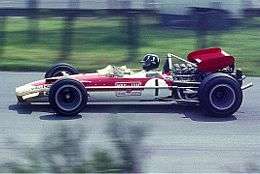
Hill was known during the latter part of his career for his wit and became a popular personality - he was a regular guest on television and wrote a notably frank and witty autobiography, Life at the Limit,[10] when recovering from his 1969 accident. Hill was also irreverently immortalized on a Monty Python episode ("It's the Arts (or: Intermission)" sketch called "Historical Impersonations"), in which a Gumby appears asking to "see John the Baptist's impersonation of Graham Hill." The head of St. John the Baptist appears (with a stuck-on moustache in Hill's style) on a silver platter, which runs around the floor making putt-putt noises of a race car engine.
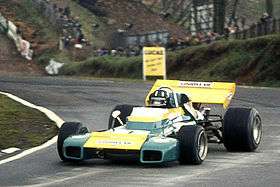
Hill was involved with four films between 1966 and 1974, including appearances in Grand Prix and Caravan to Vaccarès, in which he appeared as a helicopter pilot.[11]
Although Hill had concentrated on F1 he also maintained a presence in sports car racing throughout his career (including two runs in the Rover-BRM gas turbine car at Le Mans). As his F1 career drew to a close he became part of the Matra sports car team, taking a victory in the 1972 24 Hours of Le Mans with Henri Pescarolo. This victory completed the so-called Triple Crown of motorsport which is alternatively defined as winning either:
- the Indianapolis 500 (won by Hill in 1966), the 24 Hours of Le Mans (1972) and the Monaco Grand Prix (1963–65, 1968, 1969),[12][13] or
- the Indianapolis 500, the 24 Hours of Le Mans and the Formula One World Championship (1962, 1968).[14][15][16]
Using either definition, Hill is still the only person ever to have accomplished this feat.
With works drives becoming hard to find, Hill set up his own team in 1973: Embassy Hill with sponsorship from Imperial Tobacco. The team used chassis from Shadow and Lola before evolving the Lola into its own design in 1975. After failing to qualify for the 1975 Monaco Grand Prix, where he had won five times, Hill retired from driving to concentrate on running the team and supporting his protege Tony Brise.
Hill's record of 176 Grand Prix starts remained in place for over a decade until being equalled by Jacques Laffite.
Family
Hill married Bette in 1955; because Hill had spent all his money on his racing career, she paid for the wedding. They had two daughters, Brigitte and Samantha, and a son, Damon, who himself later became Formula One World Champion—the first son of a former world champion to emulate his father.
Rowing
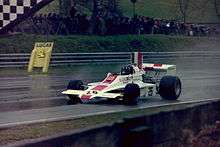
Before taking up motor racing, Hill spent several years actively involved in rowing. Initially, he rowed at Southsea Rowing Club, while stationed in Portsmouth with the Royal Navy and at Auriol Rowing Club in Hammersmith. He met Bette at a Boxing Day party at Auriol and, while courting her, he also coached her clubmates at Stuart Ladies' Rowing Club on the River Lea.
In 1952 he joined London Rowing Club, then as now one of the largest and most successful clubs in Great Britain. From 1952 to 1954, Hill rowed in twenty finals with London, usually as stroke of the crew, eight of which resulted in wins. He also stroked the London eight in the highly prestigious Grand Challenge Cup at Henley Royal Regatta, losing a semi-final to Union Sportif Metropolitaine des Transports, France by a length.
Through his racing career he continued to support rowing and London. In 1968 when the club began a financial appeal to modernise its clubhouse, Hill launched proceedings by driving an old Morris Oxford, which had been obtained for £5, head-on into a boundary wall. Hill made three runs to reduce the wall to rubble, and the car was subsequently sold for £15.
Hill felt that the experience gained in rowing helped him in his motor-racing. He wrote in his autobiography:
"I really enjoyed my rowing. It really taught me a lot about myself, and I also think it is a great character-building sport...The self discipline required for rowing and the 'never say die' attitude obviously helped me through the difficult years that lay ahead."
Famously, Hill adopted the colours and cap design of London Rowing Club for his racing helmet - dark blue with white oar-shaped tabs. His son Damon and his grandson Josh later adopted the same colours.[17]
Death
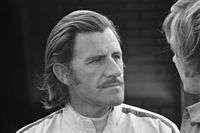
On November 29, 1975 returning from the Paul Ricard circuit, France, Hill was killed when the Piper PA 23-250 Turbo-Aztec that he was piloting (not registered, but displaying its previous cancelled US registration N6645Y) crashed near Arkley golf course in London, while attempting to land at Elstree Airfield at night in heavy fog.[5][6][7][18] The crash also resulted in the deaths of team manager Ray Brimble, mechanics Tony Alcock and Terry Richards, up-and-coming driver Tony Brise and designer Andy Smallman; all from the Embassy Hill team.[5][6][7]
Originally U.S.-registered, Hill's aircraft was "unregistered and stateless" at the time of the accident. His U.S. pilot certification had expired, as had his FAA instrument rating. His UK Private Pilot’s Licence Instrument Meteorological Conditions rating, which would have permitted him to fly passengers in the visibility that prevailed at the time of the accident, was also out of date and invalid.[18] The Independent stated he was effectively uninsured.[19]
His funeral was at St Albans Abbey, and he is buried at St Botolphs church in Shenley.
Eponymy
After his death, Silverstone village, home to the track of the same name, named a road, Graham Hill, after him[20] and there is a "Graham Hill Road" on The Shires estate in nearby Towcester. Graham Hill Bend at Brands Hatch is also named in his honour. A blue plaque commemorates Hill at 32 Parkside, in Mill Hill, London NW7.[21] In Bourne, Lincolnshire, where Hill's former team BRM is based, a road called Graham Hill Way is named in his honour.
| Gallery | ||||||||||||||||
|---|---|---|---|---|---|---|---|---|---|---|---|---|---|---|---|---|
|
Career results
Complete Formula One World Championship results
(key) (Races in bold indicate pole position, races in italics indicate fastest lap)
Complete Formula One Non-Championship results
(key) (Races in bold indicate pole position) (Races in italics indicate fastest lap)
Indy 500 results
|
|
- Hill failed to qualify the innovative John Crosthwaite (who had worked with Hill at Team Lotus) designed 'roller skate' car for the 1963 Indianapolis 500 race after crashing in practice. Hill, who had been commuting weekly due to other commitments in Europe, would not wait in the USA while the car was repaired and risk not qualifying or qualifying badly.[23][24]
- Hill's 1966 victory marked the first win by a rookie driver since Frank Lockhart's 1927 win and the last until Juan Montoya's visit to Victory Lane in 2000.
- Hill entered the 1969 Indianapolis 500, but his car (Lotus-Ford Chassis 64/2) was withdrawn during practice along with those of Mario Andretti and Jochen Rindt due to delays rectifying problems associated with hub failure on Andretti's car.
Complete Tasman Series results
| Year | Car | 1 | 2 | 3 | 4 | 5 | 6 | 7 | 8 | Rank | Points |
|---|---|---|---|---|---|---|---|---|---|---|---|
| 1964 | Brabham BT4 | LEV | PUK | WIG | TER | SAN | WAR 4 |
LAK | LON 1 |
6th | 12 |
| 1965 | Brabham BT11A | PUK 1 |
LEV | WIG | TER | WAR 5 |
SAN Ret |
LON 4 |
7th | 14 | |
| 1966 | BRM P261 | PUK 1 |
LEV | WIG | TER | WAR 2 |
LAK 1 |
SAN (3) |
LON 2 |
2nd | 30 (34) |
| 1967 | Lotus 48 | PUK | WIG | LAK | WAR Ret |
SAN | LON | NC | 0 | ||
| 1968 | Lotus 49T | PUK | LEV | WIG | TER | SUR 2 |
WAR 2 |
SAN 3 |
LON 6 |
4th | 17 |
| 1969 | Lotus 49T | PUK Ret |
LEV Ret |
WIG 2 |
TER 2 |
LAK 4 |
WAR 11 |
SAN 6 |
5th | 16 |
24 Hours of Le Mans results
| Year | Team | Co-Driver | Car | Class | Laps | Pos. | Class Pos. |
|---|---|---|---|---|---|---|---|
| 1958 | |
|
|
S 2.0 | 3 | DNF | DNF |
| 1959 | |
|
|
S 2.0 | 119 | DNF | DNF |
| 1960 | |
|
|
S 2.0 | 191 | DNF | DNF |
| 1961 | |
|
|
GT3.0 | 121 | DNF (Water leak) | |
| 1962 | |
|
|
Exp 4.0 | 78 | DNF | DNF |
| 1963 | |
|
|
ACO Prize | 310 | (8th)* | (1st)* |
| 1964 | |
|
|
P 4.0 | 344 | 2nd | 2nd |
| 1965 | |
|
|
P 2.0 | 284 | 10th | 2nd |
| 1966 | |
|
|
P 7.0 | 110 | DNF | DNF |
| 1972 | |
|
|
S 3.0 |
344 | 1st | 1st |
- 1963 Rover-BRM ran for the ACO prize for a gas turbine car covering a minimum of 3600 km, not officially classified.
Credits
Hill's easy wit and charm helped him become a television personality, notably on the BBC show Call My Bluff with Patrick Campbell and Frank Muir. For a number of years in the early 1970s he appeared as one half of a double act, with Jackie Stewart, as an insert within the BBC Sports Personality of the Year show.
In 1990, Hill was inducted into the International Motorsports Hall of Fame.
A one-off BBC Four documentary called Graham Hill: Driven was first broadcast on 26 May 2008.[25]
References
- 1 2 Up until 1990, not all points scored by a driver contributed to their final World Championship tally (see list of points scoring systems for more information). Numbers without parentheses are Championship points; numbers in parentheses are total points scored.
- ↑ "Graham Hill (1929 - 1975) - Find A Grave Photos". findagrave.com. Retrieved 28 July 2016.
- ↑ Bette Hill with Neil Ewart (1978). The Other Side of the Hill. Hutchison/Stanley Paul. p. 87. ISBN 0-09-134900-1.
- ↑ Oliver Irish (15 June 2007). "Stick to the day job, Jacques". London: Guardian Unlimited. Retrieved 5 December 2007.
- 1 2 3 "Plane crash kills driver Graham Hill". Pittsburgh Press. (Pennsylvania, U.S.). UPI. November 30, 1975. p. D-1.
- 1 2 3 "Racing mourns death of Graham Hill". Milwaukee Sentinel. (Wisconsin, U.S.). UPI. December 1, 1975. p. 5, part 2.
- 1 2 3 "After cheating death 20 years, Hill killed in air crash". Daytona Beach Morning Journal. (Florida, U.S.). Associated Press. December 1, 1975. p. 1C.
- ↑ Graham Hill at Badgergp. Retrieved 5 January 2015.
- ↑ Autosport http://forix.autosport.com/noteshow.php?l=0&x=3&r=19690010&i=3591. Missing or empty
|title=(help) - ↑ Hill, Graham (1971). Life At The Limit. London: Pan Books Ltd. ISBN 0-330-02675-5.
- ↑ Caravan to Vaccarès: Cast & Crew movies.msn.com. Retrieved on 14 July 2007.
- ↑ Dan Knutson (3 June 2003). "Points Race Stays Tight; Montoya Joins Elite Company With Victory". Retrieved 3 December 2007.
- ↑ Henri Boulanger. "Monaco Grand Prix Glitz Draws Rising Stars". IntakeInfo.com. Retrieved 5 December 2007.
- ↑ "Tribute to Graham Hill". lastingtribute.co.ok. Archived from the original on 18 January 2008. Retrieved 5 December 2007.
- ↑ Bette Hill with Neil Ewart (1978). The Other Side of the Hill. Hutchison/Stanley Paul. p. 87. ISBN 0-09-134900-1.
- ↑ Oliver Irish (15 June 2007). "Stick to the day job, Jacques". London: Guardian Unlimited. Retrieved 5 December 2007.
- ↑ Dodd, Christopher (2006). Water Boiling Aft: London Rowing Club The First 150 Years 1856-2006. The London Rowing Club. ISBN 0-9552938-0-4.
- 1 2 "Report No: 14/1976. Piper PA 23-250 Turbo Aztec 'D', N6645Y. Report on the accident at Arkley Golf Course, Arkley, Hertfordshire on 29 November 1975". AAIB. 29 September 1976. Retrieved 8 July 2014.
- ↑ Brian Viner (10 February 2014). "Hill driven on by quest for true respect". The Independent. London. Retrieved 17 November 2015.
- ↑ Graham Hill, Google Maps
- ↑ "HILL, GRAHAM (1929-1975)". English Heritage. Retrieved 4 August 2012.
- ↑ "Graham Hill Indy 500 Race Stats". Indy500.com. Retrieved 21 December 2011.
- ↑ "Mickey Thompson - Indy 500 1963". Thompson-motorsports.com. Retrieved 21 December 2011.
- ↑ Car and Driver August 1963
- ↑ "Graham Hill: Driven". BBC Four Programmes. BBC. Retrieved 20 February 2011.
External links
| Wikimedia Commons has media related to Graham Hill. |
- Graham Hill profile at The 500 Owners Association
- Grand Prix History - Hall of Fame, Graham Hill
- Graham Hill Statistics
- Graham Hill Photos
- Graham Hill, The Stig
- The Greatest 33
- The Greatest 33 Profile
- Official Accident Report on crash of N6645Y by the AAIB
- Graham Hill at Find a Grave
| Sporting positions | ||
|---|---|---|
| Preceded by Stirling Moss |
BRDC International Trophy winner 1962 |
Succeeded by Jim Clark |
| Preceded by Phil Hill |
Formula One World Champion 1962 |
Succeeded by Jim Clark |
| Preceded by Jim Clark |
Indianapolis 500 Winner 1966 |
Succeeded by A. J. Foyt |
| Preceded by Denny Hulme |
Formula One World Champion 1968 |
Succeeded by Jackie Stewart |
| Preceded by Chris Amon |
BRDC International Trophy winner 1971 |
Succeeded by Emerson Fittipaldi |
| Preceded by Helmut Marko Gijs van Lennep |
Winner of the 24 Hours of Le Mans 1972 with: Henri Pescarolo |
Succeeded by Henri Pescarolo Gérard Larrousse |
| Awards | ||
| Preceded by Stirling Moss |
Hawthorn Memorial Trophy 1962 |
Succeeded by Jim Clark |
| Preceded by Denny Hulme |
Hawthorn Memorial Trophy 1968 |
Succeeded by Jackie Stewart |
| Records | ||
| Preceded by Jack Brabham 128 entries, 126 starts (1955 – 1970) |
Most Grand Prix entries 179 entries, 176 starts (1958 – 1975), 129th entry at the 1971 Dutch GP 127th start at the 1971 Monaco GP |
Succeeded by Jacques Laffite 180 entries (176 starts), 180th at the 1986 British GP |
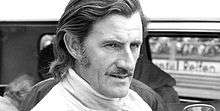

.jpg)
.jpg)

